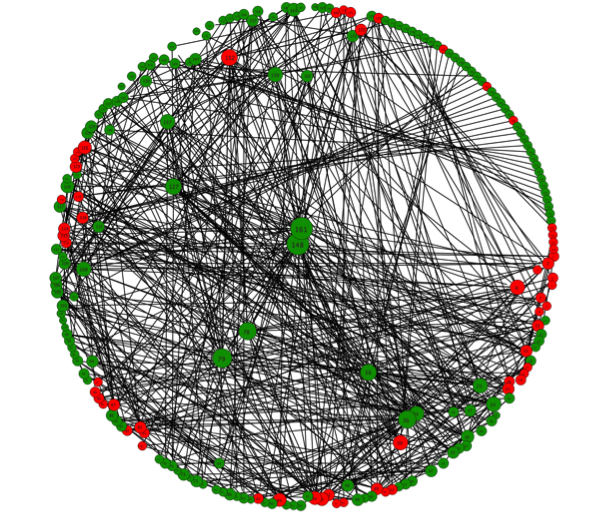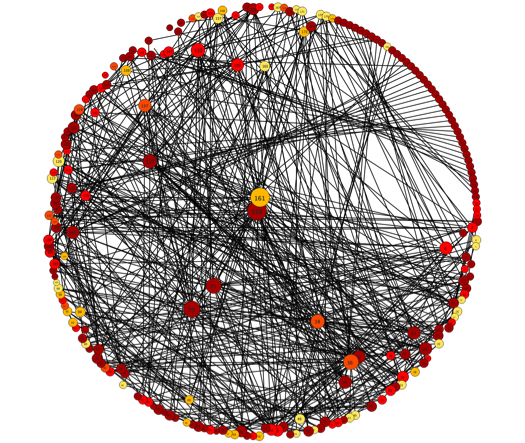NETWORKS OF DISSENT: THE BEGUINS OF LANGUEDOC
The earliest actual trace of the so-called Beguins of Languedoc is the censure some of them received during the Provincial Council held in Béziers in 1299, particularly, for preaching that the end of the world was near and that the time of the Antichrist had virtually arrived. According to the Dominican inquisitor Bernard Gui, who completed his Practica inquisitionis heretice pravitatis between 1323 and 1324, both men and women—beguini and beguinae—called themselves Poor Brethren of Penitence of the Third Order of St Francis, and wore a distinctive habit and a hooded cloak made of a coarse brownish-grey woollen cloth known as brunum or burellum. Some of these Beguins kept living in their own houses, while some others shared small dwellings that they called “houses of poverty” where the community would gather on special occasions such as Sundays and other religious holidays. The Beguin movement of Languedoc, persecuted between 1319 and 1334, was inextricably linked to the development and expectations of the Spiritual branch of the Franciscan Order, in particular to the teachings of one of its most outstanding figures, the theologian Peter of John Olivi.
The extant copies of the records of the proceedings against the Beguins of Languedoc include the depositions of ninety-five men and women suspected of involvement in the so-called “heresy of the burned Beguins.” However, the relational nature of inquisitorial sources makes it possible to identify a much larger number of individuals that were somehow connected to this movement. The fact that deponents were not only questioned about their own deeds but were also demanded to provide information about others allows the inclusion of men and women who either managed to avoid inquisitorial prosecution or whose depositions and sentences are now lost. As a consequence, the relational analysis of the available sources has allowed the expansion of the initial group of deponents to a Beguin network formed by 218 people.
Different measures of centrality have been calculated to understand the structure of the Beguin network. The most straight-forward way to approach the relational study of Beguin communities is to analyse the acquaintanceship network of this dissident movement.
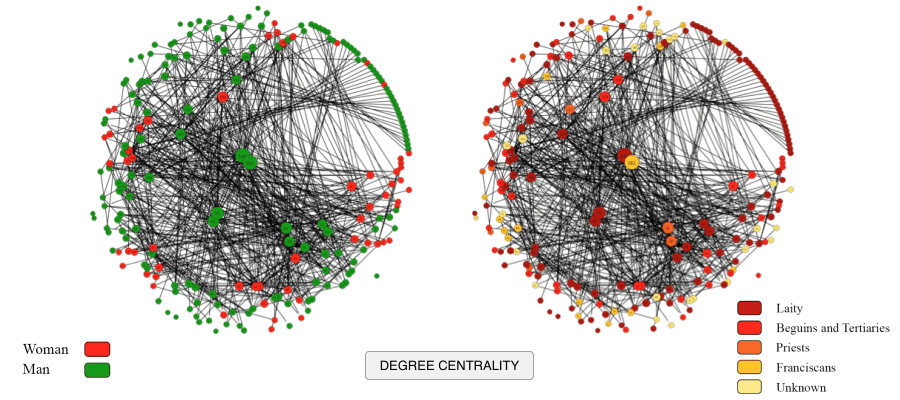
Degree Centrality
Degree centrality is the simplest of the measures that can help us gauge the position of the different actors. Degree centrality equals the number of connections of any given actor, which, in this particular case corresponds to the number of people with whom a certain actor is acquainted. It is safe to say that, even if not in such terms, degree centrality was what concerned inquisitors the most, for their goal was not only to identify as many members of the group as possible, but also, and especially, to capture the most renowned among them.
In terms of degree centrality, a central actor is one that has many connections, or in this case, many acquaintances. Interpreting this notion with regard to a dissident community—or to any spiritual community—degree centrality could be seen as a measure of the involvement of any given individual. In principle, being acquainted with a greater number of actors of the Beguin network would entail more opportunities to reach other actors, attend gatherings, exchange information and goods, contribute to the network’s social capital, and benefit from it. Accordingly, overemphasising the number of connections of some actors while obscuring the degree centrality of others results in a misleading view of the network as a whole. This is particularly significant if such a bias has a especially strong effect on a certain class of actors, as happens in inquisitorial sources where the connectivity of female actors seems to be downplayed. As can be seen in the radial layouts below, most of the actors share similarly low degrees and only a few of them appear as distinctively better connected than the rest.
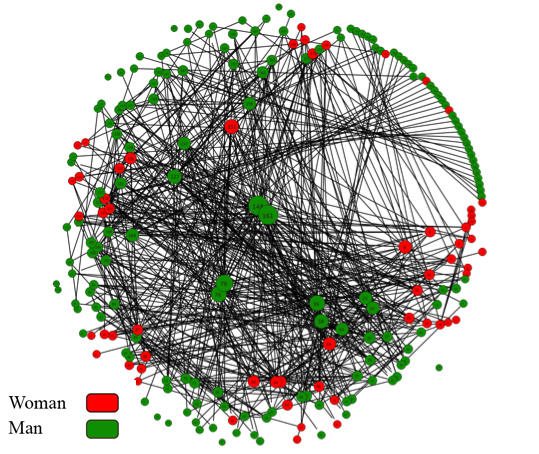
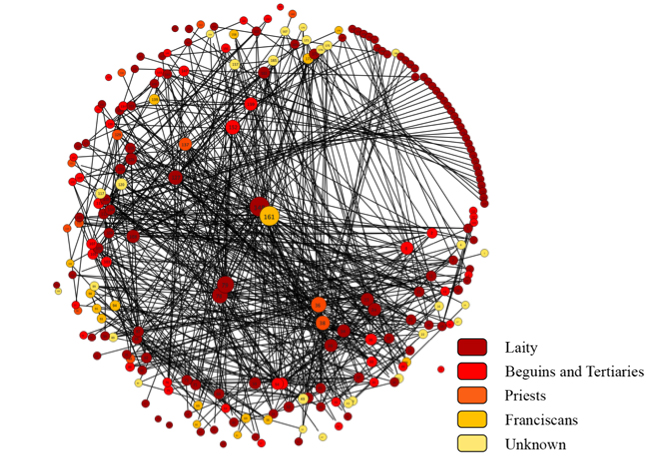
Eigenvector Centrality
Whereas degree centrality can be the same for two actors regardless of how well connected their respective connections are, another measure of centrality known as eigenvector centrality also takes into account that factor. Indeed, the potential influence of individuals in the Beguin network depended not only on their number of acquaintances but also on how well connected those acquaintances were.
Regarding women, unlike degree centrality, greatly underestimated by inquisitorial sampling methods, the results of eigenvector centrality emphasise their average position within the network.
A layout by eigenvector centrality and gender—women in red, men in green—evinces this shift in positions with women moving towards the centre. A layout by eigenvector centrality and religious status—laity in dark red, Beguins and Tertiaries in red, Franciscans in yellow, priests in orange—shows how the laity moves towards the centre.
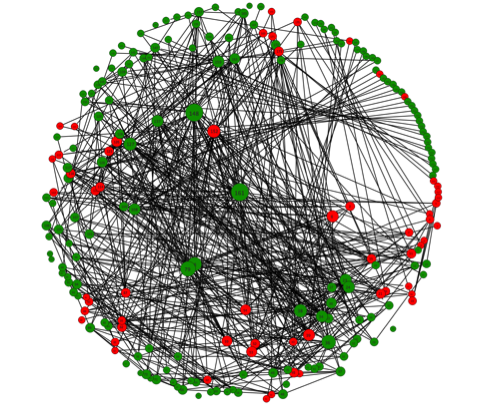
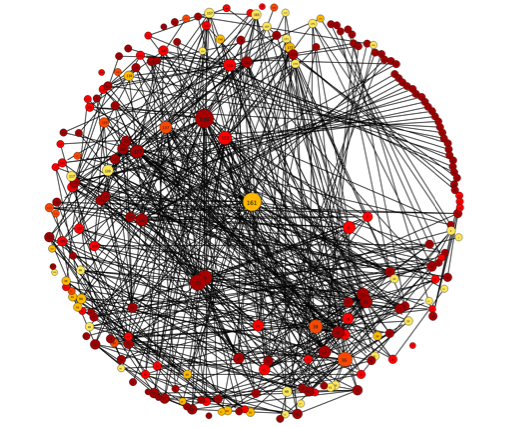
Closeness Centrality
The centrality measure that can better account for the transmission process of anything flowing through the network, be it material or immaterial, is called closeness centrality. Closeness centrality measures the distance between a given actor and all others; understanding as distance between any two actors the number of other nodes of the network standing between them. Thus, the higher the closeness centrality of an individual, the less central he or she is. In other words, the higher the ‘relational’ distance between two actors, the longer it takes for a message to travel from one to the other.
As regards the presence of women, the distribution of closeness centralities shows no significant change with respect to the results of the analysis based on eigenvector values.
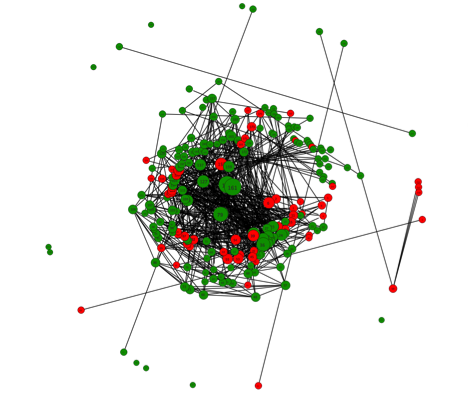
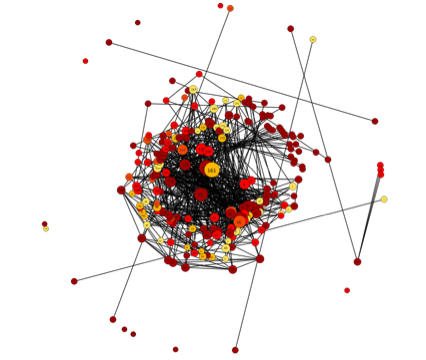
Betweenness Centrality
Only a few actors were in a position to control the flow of resources, and betweenness centrality is the most suitable centrality measure to nd them out. Betweenness centrality quantifies the role of an actor as an intermediary; the higher its value, the more an actor is likely to act as a broker between different groups that would otherwise not be connected to each other.
In general, the centrality of women appears significantly reduced when looking at the value of betweenness centrality. On the one hand, betweenness is particularly sensitive to source bias and source bias particularly affects women, whose connectivity is downplayed by the inquisitorial sampling method. On the other, the role played by the connectedness of each separate community in the centrality measures of its members suggests that the granularity of the dataset is likely to obscure the workings of smaller groups with respect to the whole network.
That is to say, aside from the aforementioned exceptions, the individuals with the highest betweenness centrality share two main features, namely, their mobility and the fact that they act as brokers between whole village- or town-based communities. As befits the social context, male mobility was on average greater than female mobility and, as a result, women are far less likely to be acting as intermediaries between communities settled far apart from each other.
